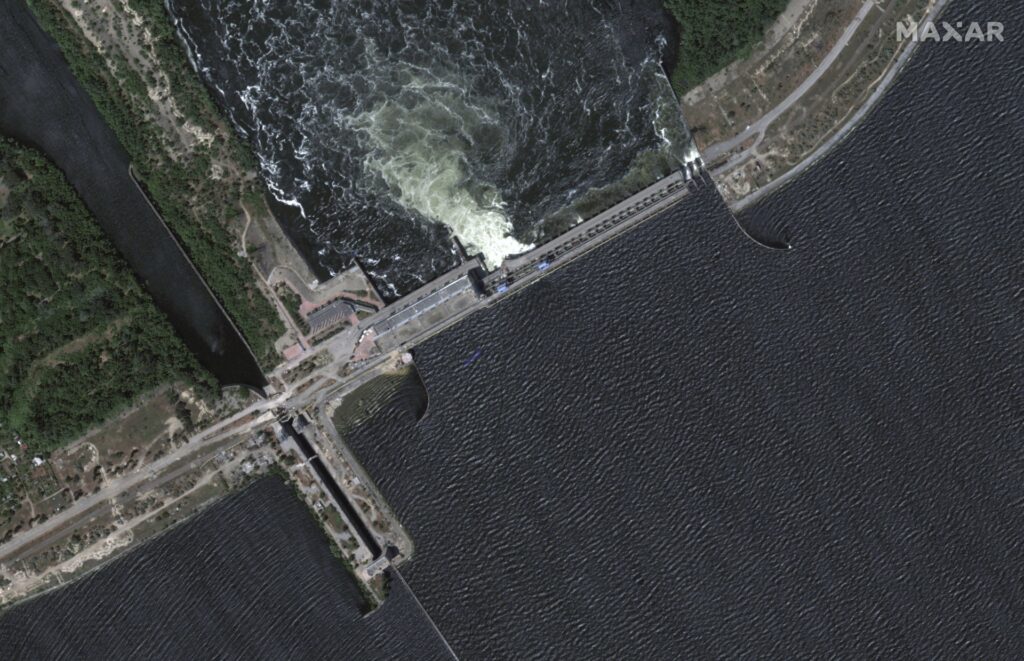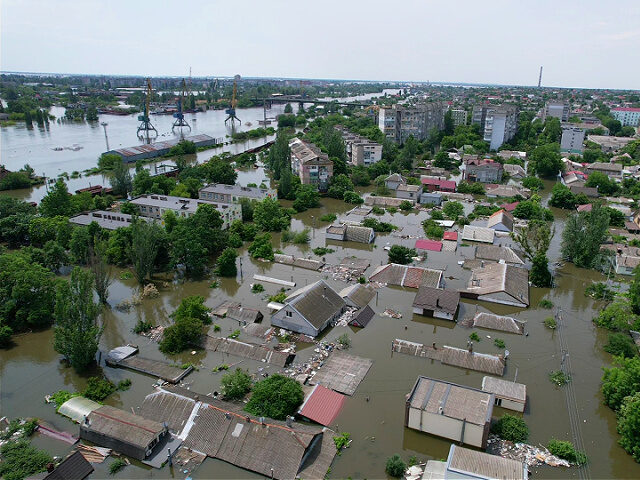Residents of the Kherson region in Ukraine find themselves dealing with new hardships thanks to the breach of the Kakhovka Dam on Tuesday, including flooded homes, drowning, disease, and even landmines dislodged by floodwater from the Dnipro River.
Ukrainians in Kherson told Radio Free Europe (RFE) on Thursday they feared a breach in the massive Kakhovka Dam for their entire lives, although they imagined it would come from an equipment malfunction or earthquake rather than a wartime attack. The terrible reality of the floods lived up to their nightmares.
RFE said the roar of the unleashed river was audible throughout Kherson, sometimes loud enough to drown out distant artillery fire. Some residents said they rose in the morning to find the lower floors of their houses and apartment buildings had quietly flooded while they slept. Most of the locals were firmly convinced the Russians blew up the dam, although Russia and Ukraine have blamed each other for the incident.

Ukrainian security forces ride in a boat during an evacuation from a flooded area in Kherson on June 7, 2023, following damages sustained at Kakhovka hydroelectric power plant dam. (Photo by ALEKSEY FILIPPOV/AFP via Getty Images)
The floodwaters are making an already difficult wartime life even harder:
The massive flooding trapped thousands of people in their homes and killed scores of animals. Ukrainian authorities estimated that some 42,000 people in the Kherson region were at risk from flooding. Many thousands are left without access to electricity and drinking water. Adding to the crisis, the Health Ministry warned about the possible contamination of water in wells, rivers, and lakes in the flooded area.
Two days after the breach, the water level was still rising, and more and more Kherson residents — especially those from the most hard-hit Korabel district, which is on an island, and the Dnieper embankment — were forced to evacuate and seek shelter.
Since the evacuation started in Kherson, rescuers have brought in groups of people who had stayed in their homes, hoping in vain that the floodwaters would not reach them. Unable to save their possessions, they were coming with only documents in their bare hands and frightened, soaking-wet dogs and cats.
Reuters reported on Thursday that hundreds of stranded Ukrainians were rescued from their rooftops as almost 230 miles of Kherson were submerged under flood waters. Satellite photos showed the Dnipro widening dramatically and tearing Kherson in half.

This image provided by Maxar Technologies, shows Kakhovka dam and station, Ukraine before collapse, on June 5, 2023. (Satellite image ©2023 Maxar Technologies via AP)
“Friends and family of stranded residents posted appeals online with names, photos and GPS locations of residents. The coordinator of a volunteer group on the Telegram messaging app said the appeals were getting more urgent because people were running out of drinking water,” the report said.
The Ukrainian government said hundreds of thousands of its citizens have been left without drinking water, and soon they will run low on food, as an already dire food crisis will be greatly exacerbated by the loss of huge swathes of farmland. The United Nations rushed food, medicine, and equipment to the region, describing the lack of drinking water as “the most pressing need.”
Global wheat prices soared after the dam burst, although futures were reportedly stabilizing by Thursday. The area affected by the flooding is a major agricultural region, but analysts noted its output has already been greatly diminished by the war, so the shock from the flooding is not as pronounced.
Another threat unleashed by the flooding comes from landmines. The Red Cross said on Thursday it fears a sizable number of mines were uprooted by the floods and have become floating booby traps, while the mines that were not dislodged have become more difficult to locate and disarm.
“We knew where the hazards were. Now we don’t know. All we know is that they are somewhere downstream,” warned Red Cross weapon contamination chief Erik Tollefsen.

COMMENTS
Please let us know if you're having issues with commenting.